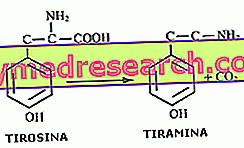Premise
Red beards, red beets or, still, red carrots: they are all dialectal synonyms used in the local language of some Italian regions, all referred to the red turnips . We are talking about an unmistakable tuber for its very special bright red color, so much so that the characteristic pigment of the red turnips, betanin, is very much exploited also by the food industry.

General information on red turnips
Although belonging to the same family, beetroot must not be confused with sugar beet.
The red turnip has ancient origins: so much so that its consumption is even mentioned in some ancient Greek writings dating back to 420 BC, a period in which the red tuber was known simply as beta . According to the thought of other authors, the origin of the red turnips dates back to 2, 000 BC, given the presence of some archaeological finds that attest to it.
From the most ancient times, therefore, the red turnip is exploited by man as a food that lends itself well to accompany meat and savory dishes. However, the preciousness of the red turnip does not stop only in the culinary field: in fact, as we will deepen during the explanation of the article, the red turnip is also important for the therapeutic properties. Not surprisingly, we speak of red turnip as a concentrate of essential elements for human health .
Diffusion and cultivation
Red turnip is a tuber originating in European countries and North Africa, currently cultivated in all areas of the Mediterranean.
The red turnip, which does not require special cultivation conditions, is well suited to any type of soil, although it prefers the slightly acid and clayey ones. Red beet is cultivated up to 800 meters above sea level, and loves temperate climate regions.
Botanical description
Red turnips are known botanical tubers such as Beta vulgaris var. rapa forma rubra : it is a plant belonging to the Chenopodiaceae family and the Beta genus. Fodder, vegetable and sugar varieties exist.
The red turnip is a biennial herbaceous plant, sometimes cultivated as an annual (height 0.5-1 meter): similarly comparable in shape to the beet, the red turnip has a red film; also the root, leaves and petioles are painted from the same ruby color. The leaves have a particular heart shape and, in the cultivated species, reach a length of more than 20 centimeters, while the flowers have five petals and are gathered in spikes.
The red turnip blooms in the warm months, particularly from July to September.
Nutritional values and pigments
Red turnips contain very few calories (only 19 per 100 grams of product): for this reason, they are among the low-calorie foods, excellent foods preferable therefore in balanced diets that presuppose a marked caloric restriction.
The red turnips are made up of a good quantity of water, corresponding to around 91%; only 4% of carbohydrates and 2.6% of fibers are counted; the remainder is made up of proteins and, minimally, of fats.

In the red beet root a glycoside is found which attributes the typical bright red color to the turnip: it is betanin, exploited - as mentioned - by the food industry as a natural dye (E 162), obtained from the root by squeezing or extraction with water from fragments of the root system. Another pigment found in the red turnip is betaxantina, which gives it yellowish streaks.
Furthermore, in the turnip root there are other substances used in herbal medicine and cosmetics: saponins, anthocyanins, flavonoids in general and allantoins (moisturizing and anti-reddening properties).
Red turnips in the diet
Red turnips are generally eaten cooked, although it is preferable to eat them raw, grated or very thin - in order to take on all the vitamins, minerals and fibers they contain.
Some like to bake red turnips, then toasted and au gratin.
In herbal medicine, the decoction of beetroot as a purifying, remineralizing and digestive is recommended.
Therapeutic properties
As we have seen, the red beet has many therapeutic properties, expertly exploited in the herbalist-phytotherapeutic field. It is a vegetable with primarily purifying and refreshing properties. Given the wealth of minerals, the red turnip is inserted among the strongly remineralizing foods and, for the same reason - as well as for the richness of oxalates - is not recommended in the case of kidney stones.
The consumption of red turnips is recommended instead to anemics: in fact, it seems that the chemicals present in the vegetable are able to revitalize the red blood cells and rebalance the iron levels in the blood.
Among the other properties attributed to the red turnip are the antiseptic, nourishing and restorative ones; for these reasons, the consumption of turnips is particularly beneficial in flu states.
The red root is also useful for promoting digestive functions, as it stimulates the production of gastric juices: strictly speaking, it is not recommended for those suffering from stomach acid.
The consumption of red turnips is also contraindicated for diabetics, given the modest sugar content (4%) of this vegetable.
In cosmetics, the red turnips are used both to extract the red pigment and to prepare creams with capillarotropic and anti-reddening action.
Anti-cancer vegetable?
In the International Journal of Cancer, the role of red turnips as a potential anti-cancer food is discussed: the question is in some ways questionable and obscure, and there is no doubtful and unequivocal proof that the hypothesis is verified. In particular, the aforementioned journal discusses the possible role of red turnips in the prevention of colon cancer; for others, the red turnips would be able not only to prevent cancer, but also to fight it.
Red turnips in brief, summary on red turnips »



